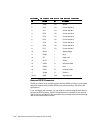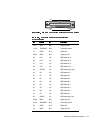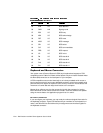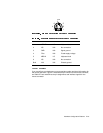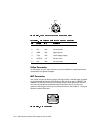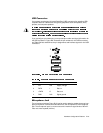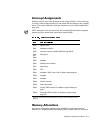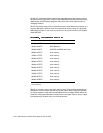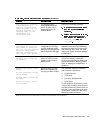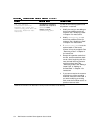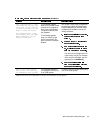
B-18 Dell Precision 610 Mini Tower Systems User’s Guide
divided into
conventional memory
(sometimes called
base memory
) and upper memory.
All system memory above this 1 MB is called
extended memory
and cannot be directly
addressed by MS-DOS–based programs without the aid of some special memory-
managing software.
Table B-10 provides a map of the conventional memory area. When the processor or a
program addresses a location within the conventional memory range, it is physically
addressing a location in main memory, which is the only main memory it can address
under MS-DOS.
Table B-11 provides a map of the upper memory area. Some of these addresses are
dedicated to various system devices, such as the system BIOS. Others are available
for use by expansion cards and/or an expanded memory manager (EMM). When the
processor or a program addresses a location within the upper memory area, it is phys-
ically addressing a location within one of these devices.
00000h–003FFh Interrupt vector table
00400h–004FFh BIOS data area
00500h–005FFh MS-DOS and BASIC work area
00600h–0FFFFh User memory
10000h–1FFFFh User memory
20000h–2FFFFh User memory
30000h–3FFFFh User memory
40000h–4FFFFh User memory
50000h–5FFFFh User memory
60000h–6FFFFh User memory
70000h–7FFFFh User memory
80000h–8FFFFh User memory
90000h–9FBFFh User memory
NOTE: For the full name of an abbreviation or acronym used in this table,
see the Glossary.



